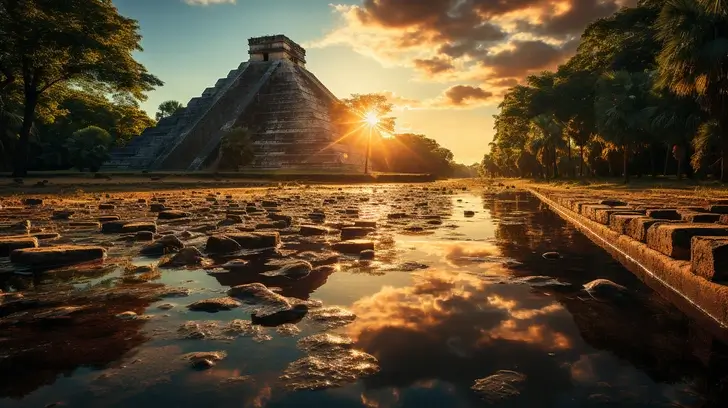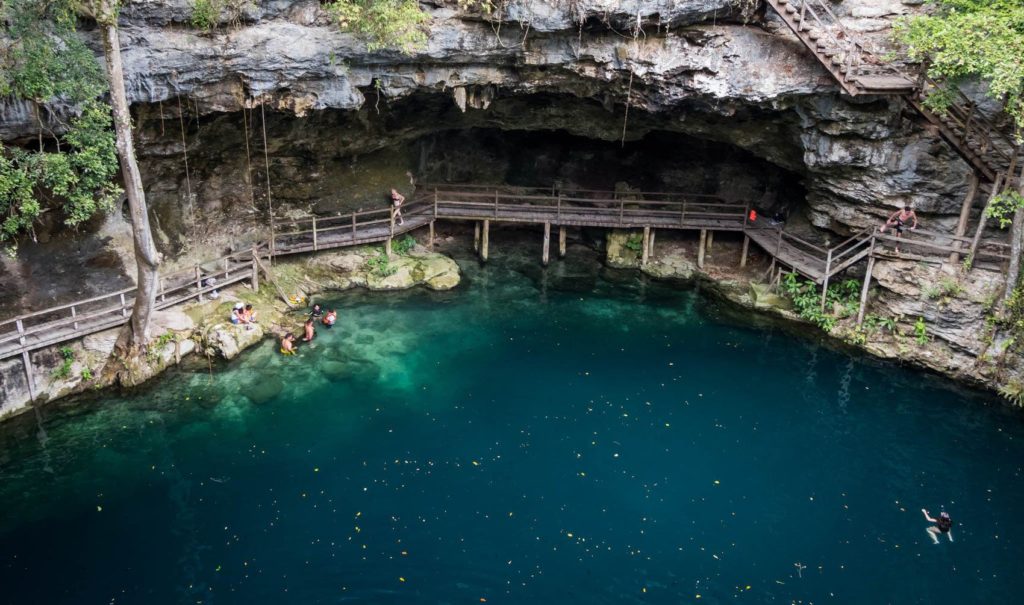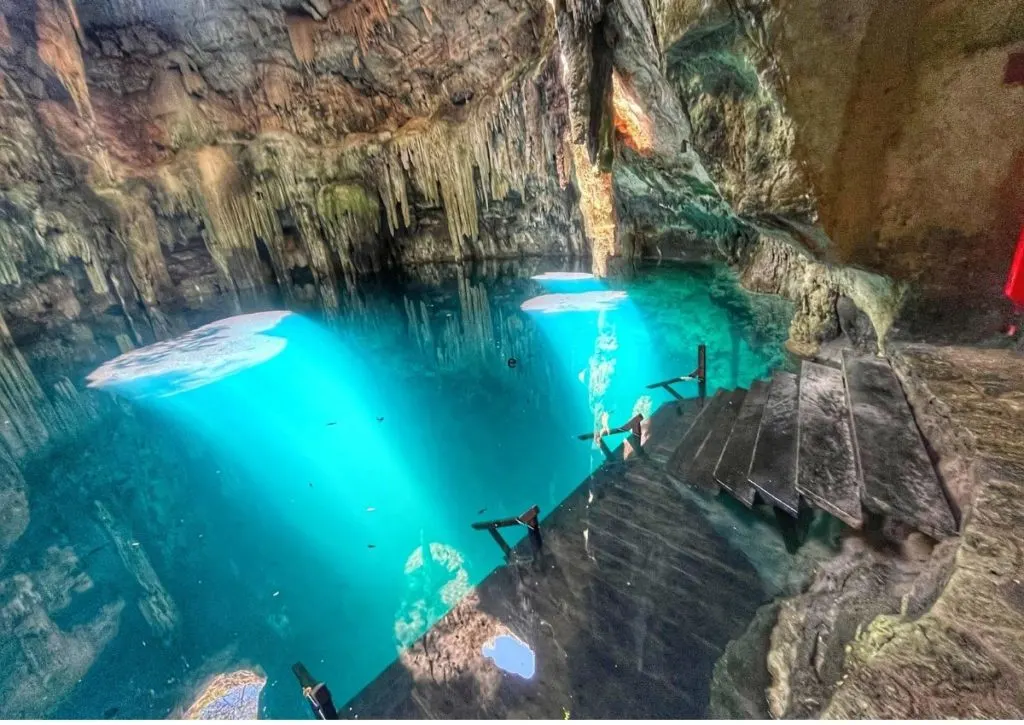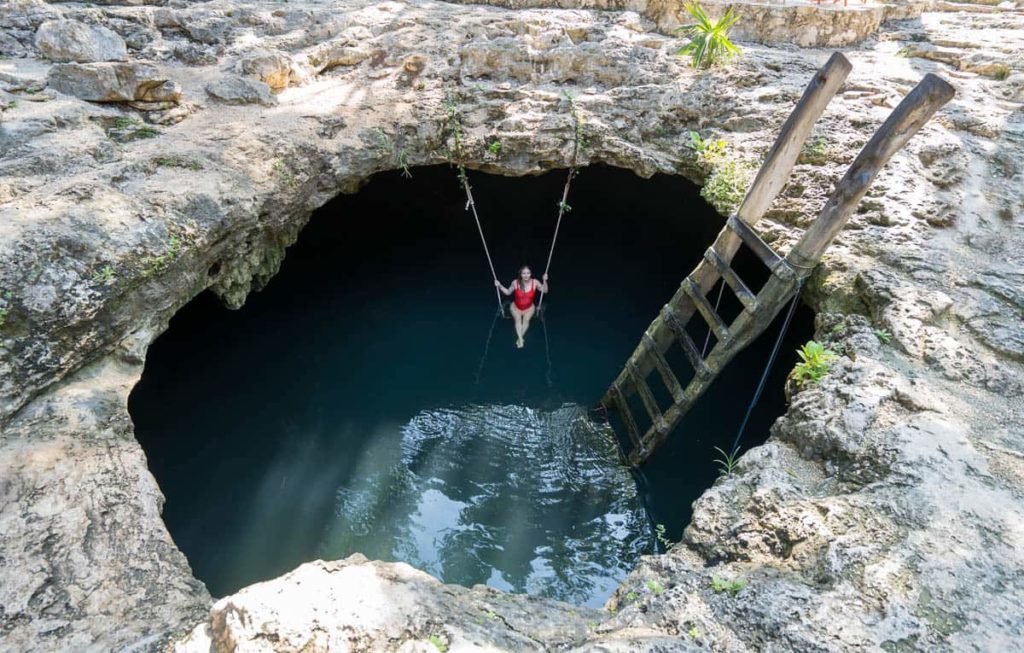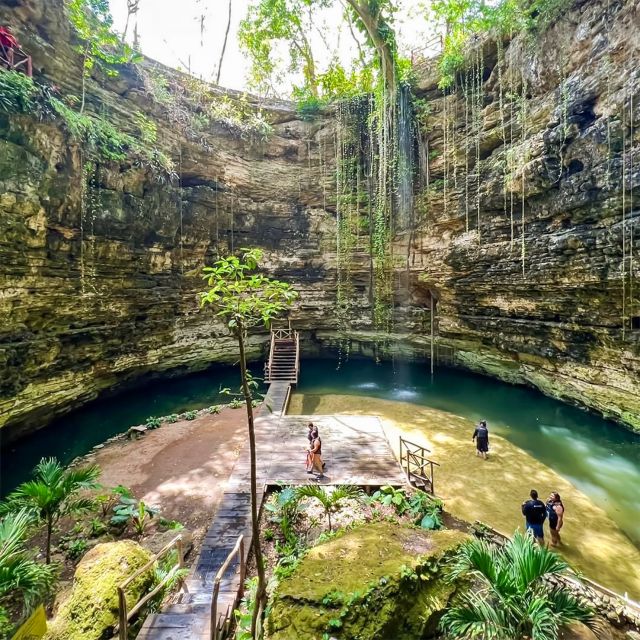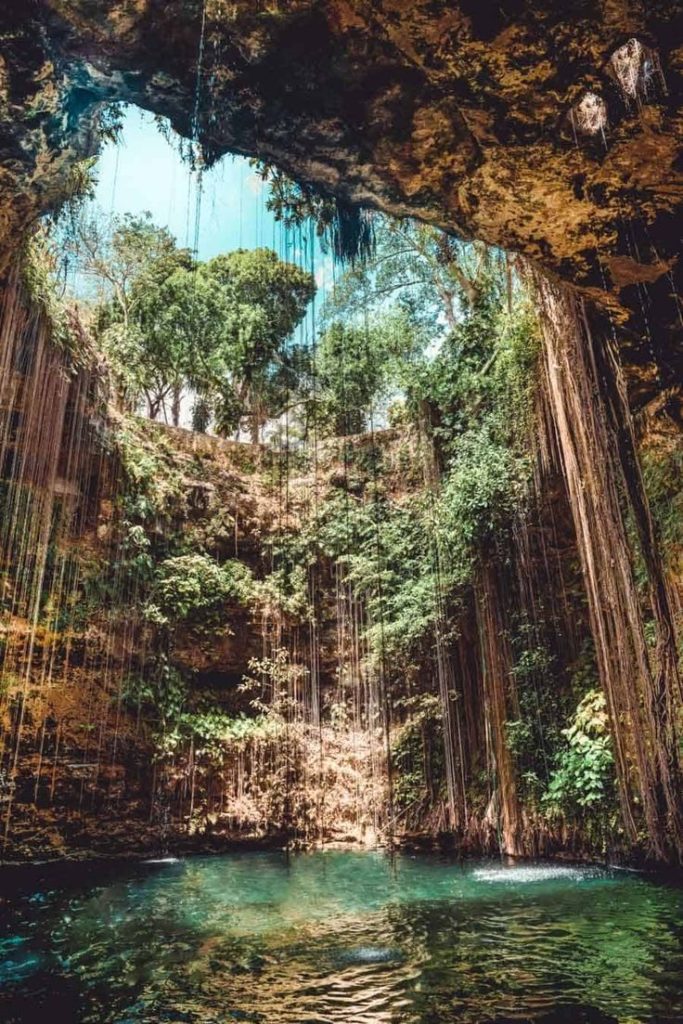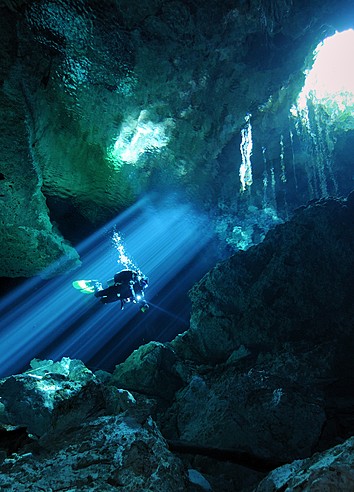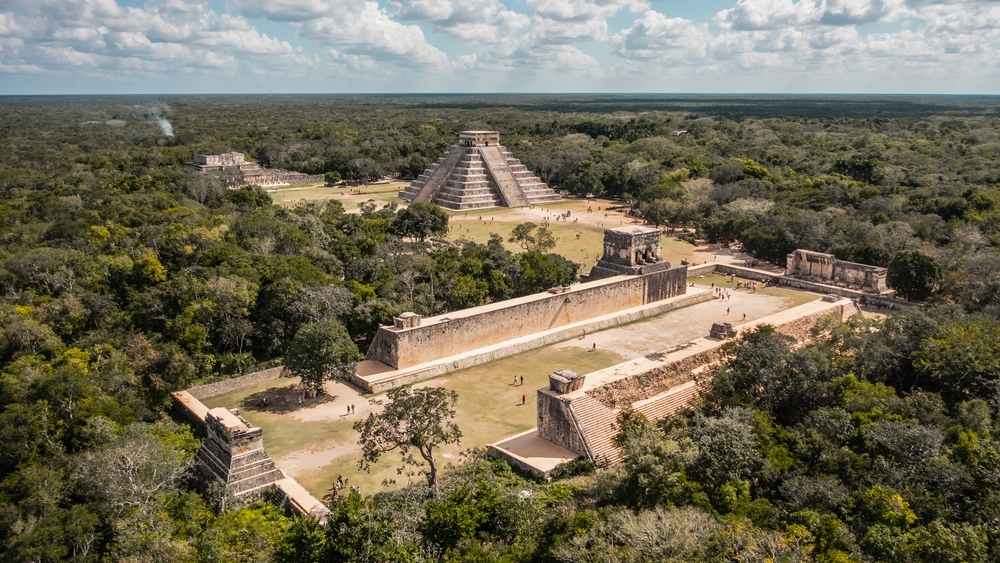Cenotes: The entrance to the Mayan underworld; the portal between life and death; bringer of water.
You cannot have life without water. The Maya knew this, and laid out their cities and temples in respect to their sources of water– cenotes. In Chichen Itza, many cenotes have been explored, and it has been determined they were likely part of the sacred geometry of the city itself. These cenotes connect to one another through a labyrinth of underground (underwater) tunnels. Only about 10% of these have been explored (about one thousand miles).
The cenotes brought water to the people of Chichen Itza, and many other locations in the Mayan world. Some cities are better explored and excavated than others; with the city of Coba, once home to fifty thousand people and over thirty square miles only two percent excavated due to the density of the jungle that has reclaimed it.
Today, about one million Maya still live in the Yucatan.
Many of the cenotes have been found to have sacrificial shelves, also known as ofrendas, in what is now extremely deep water (20-30′ below the surface). The Maya would likely sacrifice people there in a plea to the Gods to bring the rain; it is theorized that there was a 20-30% decrease in rainfall totals that brought a deep drought to the Maya during a population boom due to their deforestation. No rain, no drinking water, no corn. Without these things, it would become impossible to sustain life.
More Info:
Chichen Itza
Uprooted Traveler
The Whole World Is A Playground
National Geographic (Photo of the Day)
UNESCO
National Geographic (World Heritage)
Maya News (en español)
CNN Travel
